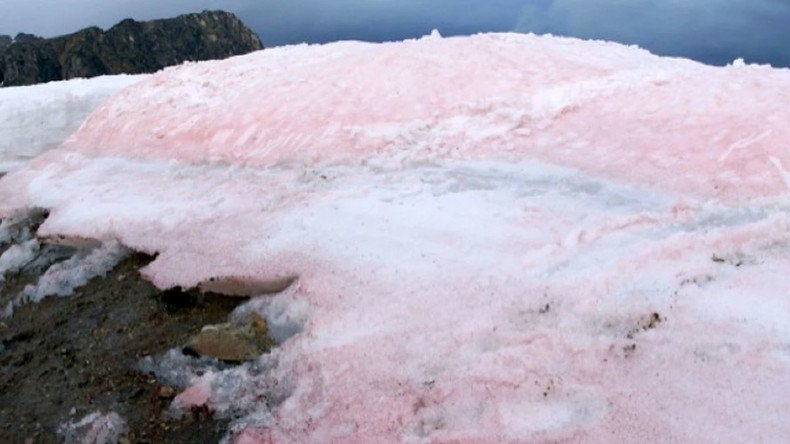Not so pretty in pink: Arctic cotton candy-colored snow may be warning sign

To some, pink snow sounds like a child’s fantasy come true. To others, it sounds like a dangerous new drug. But in reality, pink snow exists... and it isn’t a good sign. The blush-toned hue is the chemical reaction of algae that causes Arctic melt.
Rosy snow is commonly seen at high altitudes when normally green algae turn red from absorbing ultraviolet rays. However, the reddish snow could also be increasing the speed of glacial melt.
Heat dome: ‘Climate change’ terrorizes US southwest with extreme tempshttps://t.co/voQ5r1IztJpic.twitter.com/M3snSB0E5j
— RT America (@RT_America) June 20, 2016
The simplest way to understand this is to think about wearing a black shirt on a hot day. People typically try not to do that because darker colored objects absorb a higher amount of incoming light than light-colored objects, which tend to reflect light. Here, it’s like a glacier putting on a red shirt, the Washington Post explained.
More in-depth details of the phenomenon come from a paper published on Wednesday in the journal Nature Communications. The study looked at 40 different red snow samples from 16 glaciers and snowfields from Greenland, Norway, Sweden and Iceland.
Loss of heritage: LA tribe to be resettled as US’ first climate refugees for $48 millionhttps://t.co/55bAuczb9Fpic.twitter.com/pVi5YVGAVe
— RT America (@RT_America) May 6, 2016
Scientists examined the albedo of red snow, meaning how much light is not absorbed by an object. The presence of red algae decreased albedo by 13 percent.
“Our results point out that the ‘bio-albedo’ effect is important and has to be considered in future climate models,” Stefanie Lutz, one of the study’s authors, said in a statement.
Part of the issue is that the algae may create a positive feedback loop, meaning algae makes more algae. When the algae bloom, snow melts. Melting snow then nourishes the algae and more algae grow.












